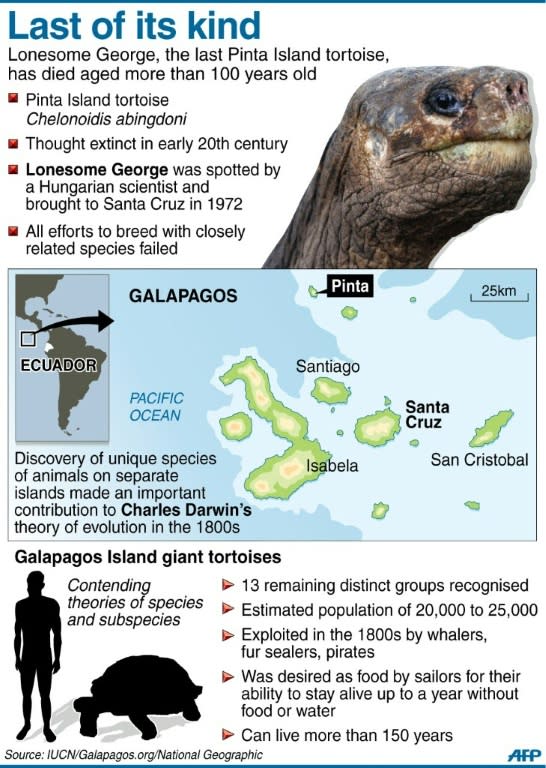Body of tortoise 'Lonesome George' returned to Galapagos Islands
The embalmed body of the giant tortoise known as Lonesome George -- the last known member of a species that was wiped out with his death in 2012 -- returned home to the Ecuadoran Galapagos Islands. The body arrived in Puerto Ayora, the capital of the archipelago's Santa Cruz Island, on an Ecuadoran military plane after undergoing taxidermy work at New York's American Museum of Natural History, the Galapagos National Park said. The giant tortoise -- thought to be around a century old when he died in June 2012 -- was the last known member of the subspecies Geochelone nigra abingdoni. He failed to reproduce despite a decades long conservation effort that earned him the moniker "Lonesome George." His body will go on display at the park starting February 23, after having starred in an exhibition at the New York museum from September 2014-January 2015. The Pacific island chain is famous for its unique flora and fauna studied by Charles Darwin as he developed his theory of evolution. Of the 15 species of giant tortoise known to have originated in the Galapagos, three, including George's, have gone extinct -- victims of plundering 18th-century pirates who damaged the islands' fragile ecosystem.



